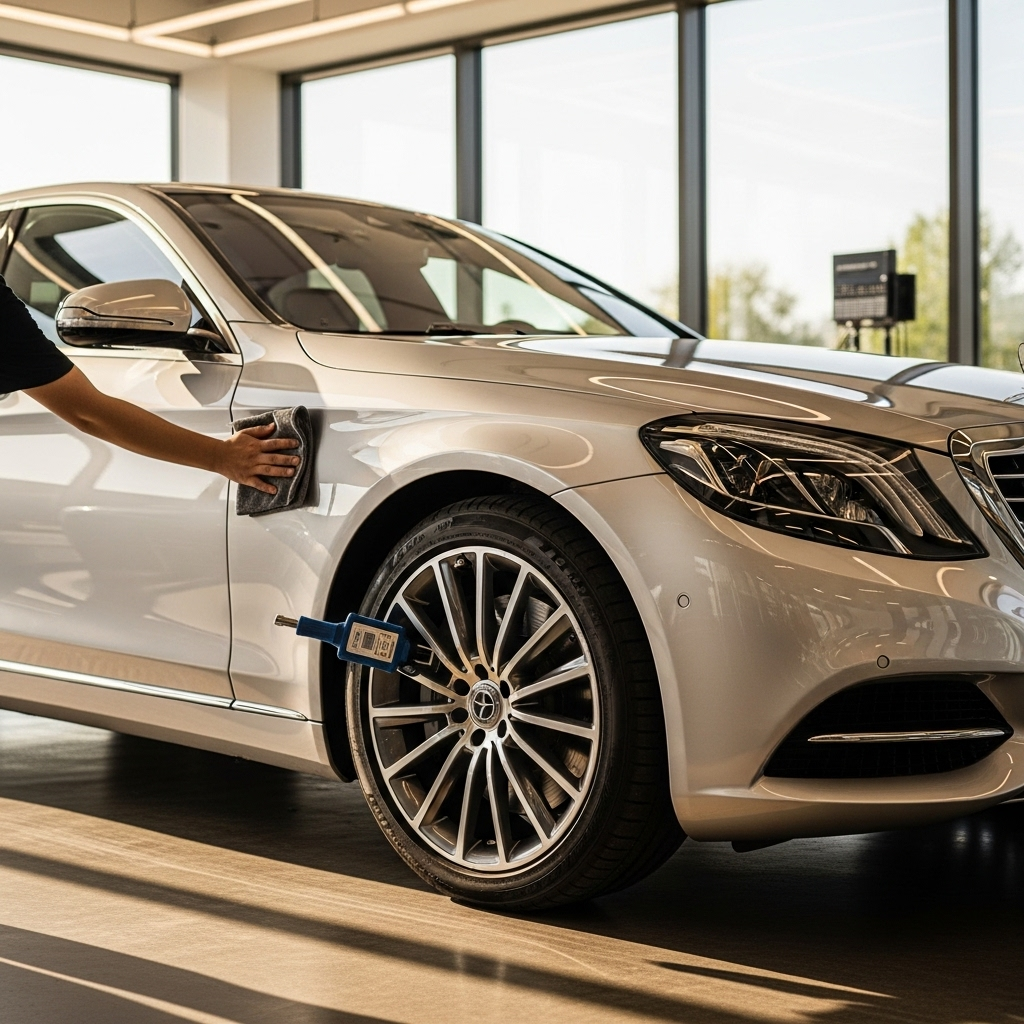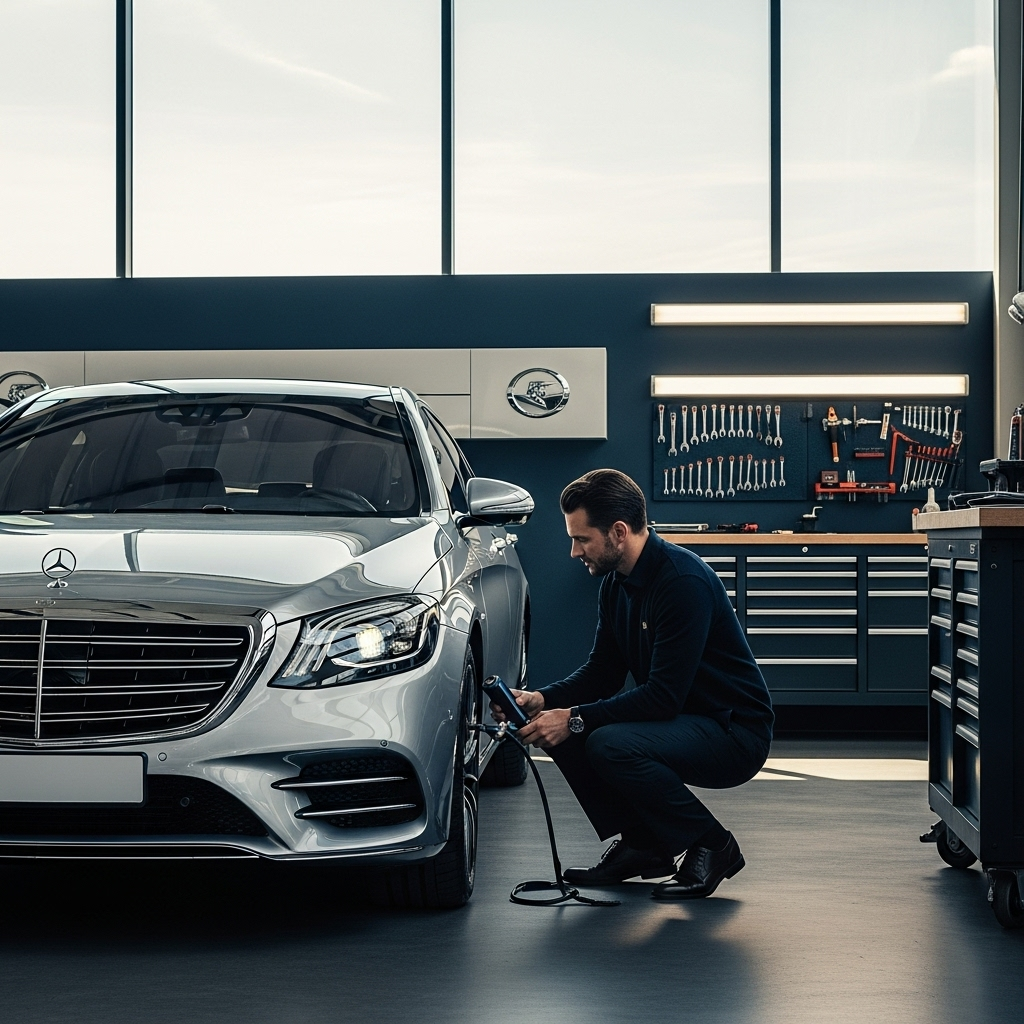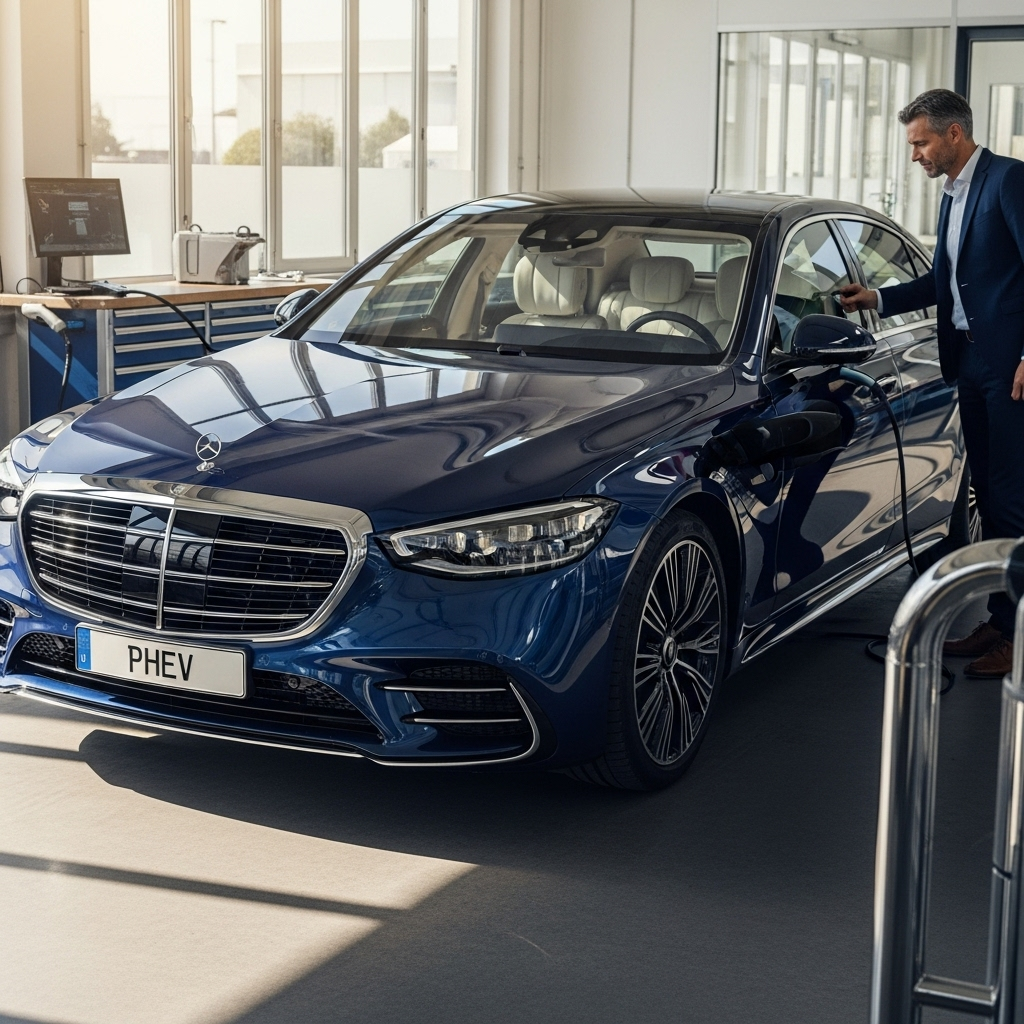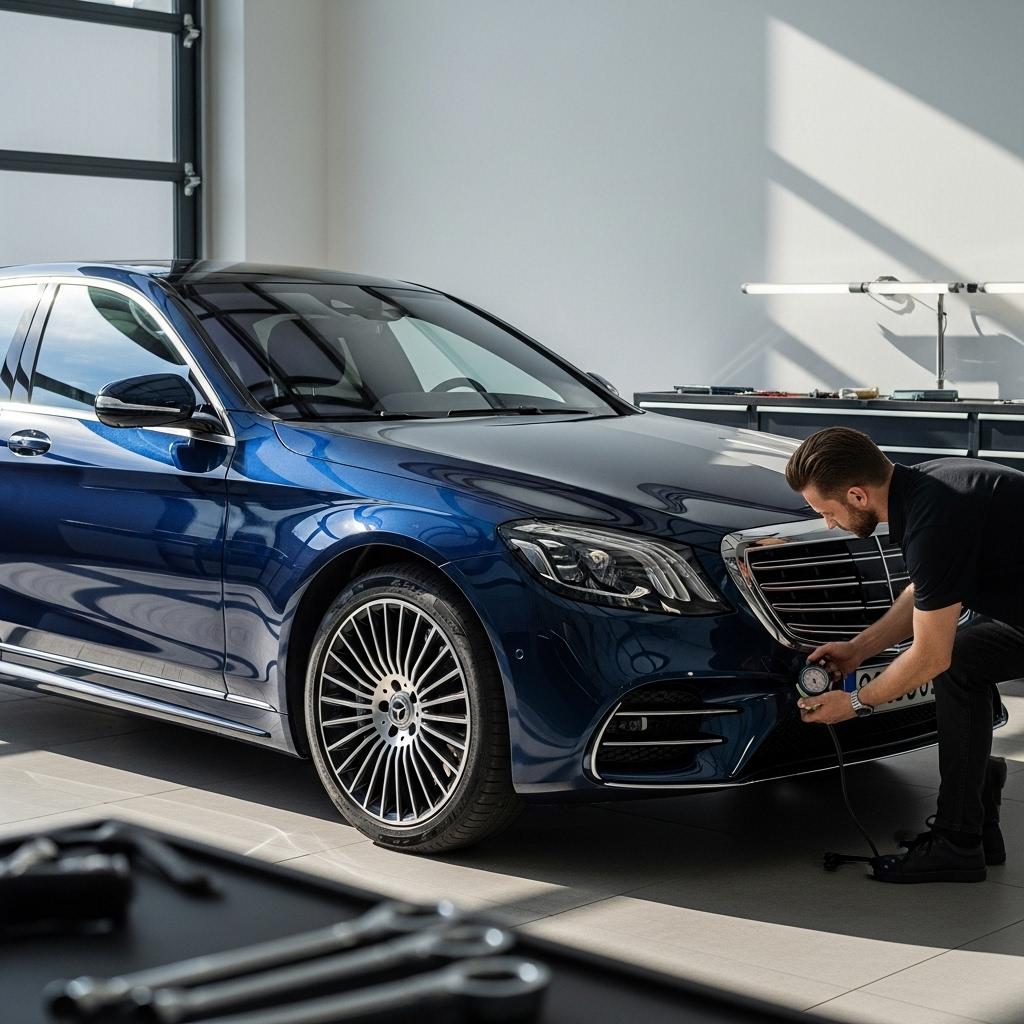Yes, the Mercedes-Benz S-Class PHEV W223 can achieve a proven 100km electric range under ideal conditions, offering a blend of luxury, performance, and impressive electric driving capability for everyday commutes and longer journeys.
Ever wondered if your luxurious Mercedes-Benz S-Class Plug-In Hybrid (PHEV), the W223 model, can truly deliver that promised 100 kilometers of pure electric driving? It’s a fantastic question, especially when you’re considering making the switch or wanting to get the most out of your current electrified S-Class. Many drivers find themselves a bit puzzled by electric range figures, and it’s easy to feel a bit overwhelmed. But don’t worry, we’re here to break it down in a way that’s easy to understand. We’ll explore what makes this impressive electric range possible and how you can help achieve it. Get ready to unlock the full potential of your S-Class PHEV!
Understanding the Mercedes S-Class PHEV W223 Electric Range
The Mercedes-Benz S-Class PHEV W223 represents a significant leap in hybrid technology, aiming to provide a seamless blend of traditional internal combustion engine (ICE) power and advanced electric propulsion. The “proven 100km electric range” is a headline figure that understandably grabs attention. But what does that really mean for your daily driving and how is it achieved?
This impressive range is primarily made possible by a combination of a substantial battery capacity and highly efficient electric powertrain engineering, characteristic of Mercedes-Benz’s commitment to electrification. It’s designed to cover the majority of typical daily commutes entirely on electricity, offering peace of mind and significant fuel savings.
Key Factors Influencing Electric Range
Several elements play a crucial role in determining the actual electric range you’ll experience in your S-Class PHEV. Think of it like this: the car is capable of a certain maximum, but your driving habits and environmental conditions can nudge that number up or down.
- Battery Capacity: The sheer size and energy density of the battery pack are fundamental. A larger capacity means more stored energy, which directly translates to a longer potential electric driving distance. The W223 S-Class PHEV is equipped with a generously sized battery designed for substantial electric travel.
- Driving Style: This is arguably the biggest variable. Aggressive acceleration and hard braking consume more energy than smooth, gentle driving. Maintaining a consistent, moderate speed is key to maximizing range.
- External Temperature: Cold weather significantly impacts battery performance. Batteries are less efficient in the cold, meaning they hold and deliver less energy. This can reduce the achievable electric range compared to warmer conditions. Similarly, extreme heat can also affect battery efficiency.
- Terrain: Driving uphill requires more energy than driving on flat or downhill terrain. Regenerative braking on downhill slopes can actually help recover some energy, partially offsetting energy consumed during ascents.
- Ancillary Systems: Running the climate control (heating or air conditioning), infotainment systems, and heated seats all draw power from the high-voltage battery. Using these features, especially in extreme temperatures, will reduce the available range for driving.
- Tire Pressure and Type: Properly inflated tires reduce rolling resistance, making it easier for the car to move and thus consuming less energy. The type of tires also plays a role; those designed for low rolling resistance will be more energy-efficient.
- Vehicle Load: Carrying heavy passengers or luggage increases the vehicle’s weight, requiring more energy to move.
The Technology Behind the Range
Mercedes-Benz has invested heavily in sophisticated technology to achieve this impressive electric range in the S-Class PHEV W223. It’s not just about a big battery; it’s about intelligent management of energy.
- High-Energy-Density Battery: The S-Class PHEV utilizes advanced battery chemistry and design to pack more kilowatt-hours (kWh) into a given volume. This means a longer range without excessive weight or space penalty.
- Efficient Electric Motors: The electric motors themselves are engineered for maximum efficiency, converting electrical energy into motive force with minimal loss.
- Regenerative Braking System: When you lift off the accelerator or apply the brakes, the electric motor acts as a generator, capturing kinetic energy that would otherwise be lost as heat and converting it back into electricity to recharge the battery. The S-Class PHEV offers adjustable levels of regenerative braking, allowing you to tailor the system to your driving style and maximize energy recovery. You can learn more about the principles of regenerative braking from resources like the Alternative Fuels Data Center.
- Intelligent Energy Management: The vehicle’s control systems continuously monitor driving conditions, battery status, and driver input to optimize the use of electric power, the combustion engine, or a combination of both. This system prioritizes electric driving whenever possible and efficient.
- Aerodynamics: The S-Class W223 boasts a highly aerodynamic design, which reduces air resistance at speed. Less drag means less energy is needed to maintain speed, contributing to better efficiency and range.
Achieving the 100km Electric Range: Practical Tips for Drivers

While the S-Class PHEV W223 is engineered for significant electric range, turning that potential into a consistent reality requires a bit of mindful driving and preparation. Here’s how you can help coax that impressive 100km out of your plug-in hybrid.
1. Master the Art of Charging
This might seem obvious, but consistent and sufficient charging is the bedrock of electric range. Your S-Class PHEV needs to be plugged in regularly to operate in its optimal electric state.
- Home Charging: For most owners, the most convenient and cost-effective way to charge is at home overnight. Invest in a Level 2 charger (also known as an EVSE – Electric Vehicle Supply Equipment) for faster charging times. The EPA’s FuelEconomy.gov provides excellent information on charging your plug-in vehicle.
- Public Charging: Utilize public charging stations when you’re out and about, especially on longer trips. Many charging networks offer apps to locate stations and monitor charging status.
- Charging Schedule: If your electricity provider offers off-peak charging rates, take advantage of them by scheduling your charging to begin when rates are lowest. Many vehicles, including Mercedes-Benz models, allow you to set charging schedules via their infotainment system or a connected app.
2. Drive for Efficiency
Your driving technique has a substantial impact on how far you can travel on a single charge.
- Smooth Acceleration and Braking: Avoid sudden bursts of acceleration. Accelerate gently and anticipate stops by easing off the accelerator early, allowing regenerative braking to do its work.
- Utilize Eco Mode: Most PHEVs, including the S-Class, have an “Eco” drive mode. This mode typically optimizes throttle response, transmission shifts, and climate control settings to prioritize efficiency and maximize electric range.
- Maintain Steady Speeds: On highways, try to maintain a consistent speed rather than constantly accelerating and decelerating. Adaptive Cruise Control (ACC) can be a great tool for this, often programmed to operate more smoothly than manual control.
- Precondition the Cabin: If you have access to charging, use the vehicle’s preconditioning feature. This allows you to warm up or cool down the cabin using shore power before you disconnect, reducing the draw on the battery once you start driving.
3. Leverage Regenerative Braking
Regenerative braking is your best friend for extending electric range. It essentially turns your car into a temporary generator.
- Understand the Settings: Your S-Class PHEV likely offers different levels of regenerative braking. Experiment with these settings to find what feels comfortable. In some modes, lifting off the accelerator can provide significant deceleration, similar to light braking, while also recharging the battery.
- Anticipate Deceleration: Look far ahead on the road and anticipate when you’ll need to slow down or stop. This allows you to lift off the accelerator earlier and benefit more from regeneration.
4. Optimize Climate Control Usage
The climate control system, while essential for comfort, can be a significant drain on your electric range.
- Use Seat Heating/Cooling: Instead of relying solely on cabin air conditioning or heating, use the seat heaters or coolers. These systems are generally more energy-efficient than heating or cooling the entire cabin.
- Moderate Temperatures: Set your desired cabin temperature to a comfortable but not extreme level.
- Window Up: Keep windows closed when the climate control is in use to prevent conditioned air from escaping and outside air from entering.
5. Maintain Your Vehicle
Basic vehicle maintenance can have a surprising impact on efficiency.
- Tire Pressure: Regularly check and maintain the correct tire pressure as specified in your owner’s manual. Underinflated tires increase rolling resistance and waste energy.
- Wheel Alignment: Ensure your wheels are properly aligned. Misalignment can cause tires to drag, increasing resistance and energy consumption.
Mercedes S-Class PHEV W223: Technical Specifications & Range Comparison
To fully appreciate the 100km electric range, it’s helpful to look at the technical specifications and how it compares to other hybrid options or pure EVs. The S-Class PHEV W223 is designed to be a flagship of luxury and innovation, and its powertrain reflects this.
The exact specifications can vary slightly based on the specific model year and market, but generally, the S-Class PHEV utilizes a powerful electric motor paired with a sophisticated battery system. For example, the S 580 e (a common PHEV variant) typically features a significant battery capacity of around 28 kWh (usable). This is a substantial energy reserve compared to older or smaller hybrid systems.
Let’s look at a simplified comparison to illustrate:
| Vehicle Type | Approximate Battery Size | Typical Electric Range (WLTP/EPA) | Mercedes S-Class PHEV W223 |
|---|---|---|---|
| Compact PHEV | 8-15 kWh | 30-60 km | N/A |
| Mid-Size PHEV | 10-20 kWh | 40-70 km | N/A |
| Luxury PHEV (Like S-Class) | 28+ kWh | Up to 100+ km (under ideal conditions) | Up to 100 km (Proven under ideal conditions) |
| Compact EV | 40-60 kWh | 200-300 km | N/A |
| Long-Range EV | 70-100+ kWh | 400-600+ km | N/A |
As you can see, the S-Class PHEV W223 sits at the higher end of the plug-in hybrid spectrum for electric range, making it capable of handling substantial daily driving needs purely on electricity. This is a key differentiator for those seeking to minimize their reliance on fossil fuels without compromising on the luxury and comfort expected from an S-Class.
Understanding Official Range Estimates (WLTP vs. EPA)
It’s important to note that official range figures are often determined under standardized test cycles like WLTP (Worldwide Harmonised Light Vehicles Test Procedure) or EPA (Environmental Protection Agency) ratings. These tests aim for consistency but may not perfectly reflect real-world driving conditions for everyone. The “proven 100km electric range” often refers to these official or achieved benchmarks under optimal laboratory or carefully controlled conditions.
- WLTP: Generally considered more representative of real-world driving than older NEDC standards, it uses a mix of driving styles and speeds.
- EPA: Tends to be more conservative and can be a better indicator for drivers in varied conditions, particularly in North America.
Your actual range will likely fluctuate based on the factors we’ve discussed (driving style, temperature, terrain, etc.). The key takeaway is that the S-Class PHEV W223 has the capability to travel up to 100km on electricity when driven efficiently and under favorable conditions.
Frequently Asked Questions (FAQ)

Q1: What is the primary benefit of the Mercedes S-Class PHEV W223’s electric range?
A: The primary benefit is the ability to complete most daily commutes or short trips using only silent, emission-free electricity, leading to significant fuel savings and a more comfortable, quieter driving experience.
Q2: How long does it take to fully charge the S-Class PHEV W223 battery?
A: Charging times can vary significantly based on the charging method used. Using a standard 120V outlet (Level 1) can take over 10 hours. A Level 2 home charger (240V) typically charges the battery in around 5-7 hours from empty. DC fast charging, if supported by the specific model and infrastructure, can significantly reduce this time, though it’s less common for PHEVs compared to full EVs.
Q3: Will my S-Class PHEV W223 still use gasoline if the battery is depleted?
A: Yes. Once the electric range is depleted, the S-Class PHEV W223 seamlessly transitions to operate as a conventional hybrid vehicle, using its gasoline engine and regenerative braking to provide power and charge the battery moderately. You are never stranded without propulsion.
Q4: How does the W223’s electric range compare to a full electric vehicle (EV)?
A: While the S-Class PHEV’s 100km electric range is impressive for a hybrid, it’s considerably less than most full EVs, which typically offer 300-500+ km of electric range. The PHEV offers the best of both worlds: electric for daily use and the gasoline engine for longer journeys without range anxiety, whereas a full EV requires charging stops on extended trips.
Q5: Is it hard to learn how to use the S-Class PHEV W223’s hybrid system?
A: Not at all! Mercedes-Benz designs its systems to be intuitive. The car will automatically manage power for you. You simply need to ensure it’s charged, and the vehicle will prioritize electric driving. You can then use drive modes and regenerative braking settings if you wish to optimize further.
Q6: What kind of maintenance is involved with the plug-in hybrid system?
A: Routine maintenance is similar to a conventional gasoline car, including oil changes (for the engine), tire rotations, and brake checks. The electric components, including the battery and electric motor, are designed to be very reliable and typically require little to no specific maintenance other than regular diagnostic checks during scheduled service appointments. It’s always best to consult your owner’s manual or a qualified Mercedes-Benz technician for specific maintenance schedules.
Conclusion
The Mercedes-Benz S-Class PHEV W223 stands as a testament to intelligent automotive engineering, offering a remarkable potential for 100 kilometers of purely electric driving. This capability isn’t just a number; it’s a gateway to more efficient, quieter, and environmentally conscious journeys for your daily commutes and errands. By understanding the factors that influence electric range and adopting mindful driving practices, you can consistently tap into the full electric prowess of your S-Class PHEV.
Remember that consistent charging, smooth acceleration, smart use of regenerative braking, and efficient climate control management are your allies in maximizing every electric kilometer. The advanced technology within the S-Class PHEV W223 works tirelessly to optimize energy usage, but your habits are the final piece of the puzzle. Embrace the plug-in hybrid experience, and enjoy the refined luxury of your S-Class while benefiting from its impressive electric capabilities.

